#david von krafft
Explore tagged Tumblr posts
Text

Portrait of Hedvig Sophia Augusta of Sweden, Duchess of Holstein-Gottorp by David von Krafft (1655-1724). Gripsholm Castle.
#david von krafft#gripsholm castle#stockholm#swedish royal family#swedish royalty#danish royal family#danish royalty#european royalty#oil on canvas#oil painting#18th century#18th century art#female portrait#scandinavia#sweden#svenska#sverige#swedish#northern europe#artwork#art history#painting#europe#history of art#court painter#german painter#german artist#hamburg#denmark#kunst
1 note
·
View note
Text

David von Krafft - Karl Fredrik, Duke of Holstein-Gottorp as child (1700-1739)
4 notes
·
View notes
Text

Three's a Crowd . 25 November 2024 . Zrinyi's Charge from the Fortress of Szigetvar . Johann Peter Krafft
Johann Peter Krafft (15 September 1780, Hanau - 28 October 1856, Vienna) was a German-born Austrian painter who specialized in portraits, historical works, and genre scenes.
Early life and education His father was an enamel painter who originally came from a family of wine merchants in Alsace. His brother, Joseph Krafft (1786-1828), also became a painter of portrait miniatures. By the age of ten, Krafft was already attending a drawing school.
In 1799, he and sister were sent to live with an aunt in Vienna, where he immediately enrolled at the Academy of Fine Arts, where he studied history painting with Heinrich Friedrich Füger.
In 1802, he travelled to Paris with Veit Hanns Schnorr von Carolsfeld to continue his studies. There, he made the acquaintance of Jacques-Louis David and François Gérard, who had a major influence on his style.
Career Krafft returned to Vienna in 1805, where he established himself as a portrait painter. From 1808 to 1809, he went on a study trip through Italy and became a member of the Academy in 1813. Two years later, he married Juliana Preisinger, and three of their children became painters: Marie (1812–1885), Albrecht (1816–1847) and Julie (1821–1903). He was appointed a Professor at the Academy in 1823.
In 1828, he was named Director of the Galerie Belvedere, a position he held until his death. He became an Academic Counselor in 1835. Over the next few years, he travelled to Munich, Dresden and Venice, where he purchased 80 works for the museum. He was also employed as an expert on the preservation of monuments, working at Karlstein Castle, Schönbrunn Palace and the Jesuit Church.
Death and legacy Krafft died on 20 October 1856 and was buried at the Vienna Central Cemetery in Vienna. In 1885, a street in the Leopoldstadt district of the city was named after him.
0 notes
Photo

David von Krafft - Princess Hedvig Sofia of Sweden (1681-1708)
6 notes
·
View notes
Photo
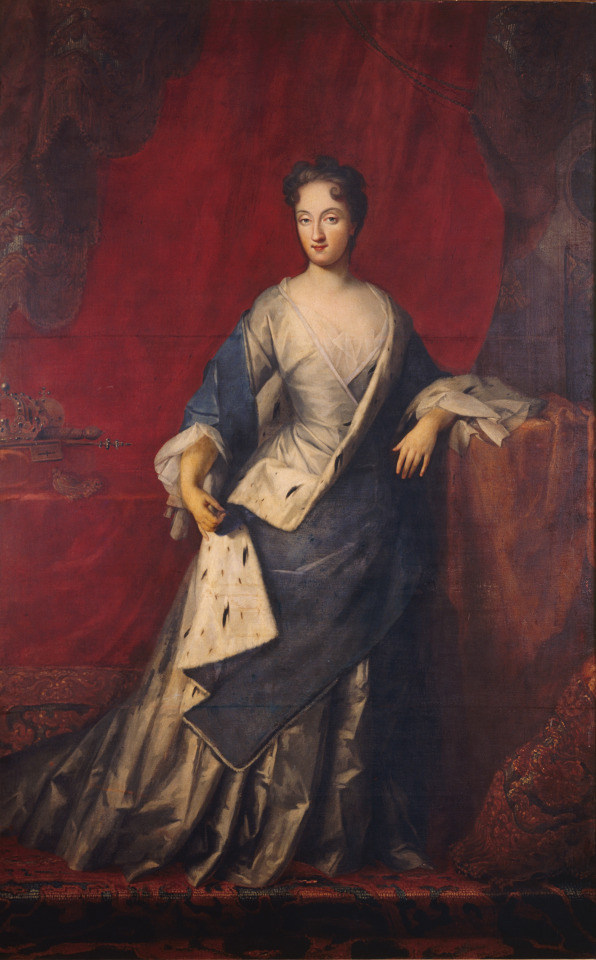
1720 David von Krafft - Ulrika Eleonora, Queen of Sweden
(National Museum of Finland)
205 notes
·
View notes
Photo

King Charles XII of Sweden by David von Krafft.
#David von Krafft#kingdom of sweden#House of palatinate zweibrücken#house of wittelsbach#kung av sverige#king charles xii#konungariket sverige#Huset Pfalz-Zweibrücken-Kleeburg#full length portrait#full-length portrait
3 notes
·
View notes
Text

Hedvig Sophia of Sweden
A portrait by David von Krafft, date unknown, baroque
Hedvig Sophia Augusta of Sweden, Duchess of Holstein-Gottorp, (26.06.1681 - 22.12.1708) was the daughter of Charled XI of Sweden and Ulrike Eleonore of Denmark. She spent most of her upbringing with her grandmother, Hedvig Eleonora of Holstein-Gottorp.
Hedvig has been described as being a good student, particularly in art, being dignified, beautiful and passionate. It is also known that her father spent more money on her than he would have done on other things or people.
As with a lot of historical women, her marriage was an arranged one. Her Husband, Frederick IV, Duke of Holstein-Gottorp, was infamous for his debauchery even before they married. This continued even after she moved to Gottorp, which enraged her so much that she returned to Sweden.
When she became Widowed, she stayed more or less permanently in Sweden, where she was known as the “Happy Princess" due to her beauty and personality. When her son became ill with smallpox, she nursed him through it and caught it herself.
She died in Stockholm aged 27. She had been temporarily interred and finally buried in 1716 because the court was worried that her funeral would be too Expensive for Sweden after the war.
#hedvig sophia of sweden#holstein gottorp#charles xi of sweden#ulrike eleonore of denmark#women in art#women in history#portrait#dark academia#baroque#david von krafft
5 notes
·
View notes
Text
Maria Eleonora of Brandenburg, Queen of Sweden (1599-1655) by David von Krafft
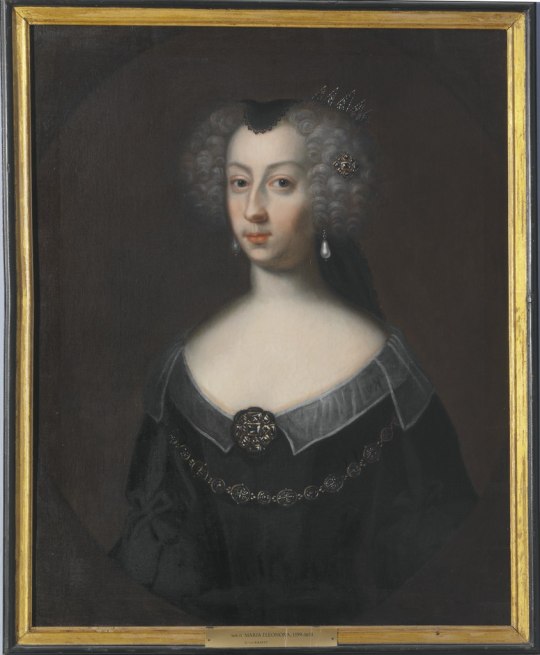
Maria Eleonora of Brandenburg, Queen of Sweden (1599-1655) by David von Krafft
#david krafft#david von krafft#sweden#17th c. sweden#17th century#mdp17th c.#early 17th century#queen of Sweden
13 notes
·
View notes
Text
Vô tình tìm ra phốt pho khi tinh luyện nước tiểu để điều chế vàng
Vô tình tìm ra phốt pho khi tinh luyện nước tiểu để điều chế vàng
CafeSo.Net – Nhiều người vẫn không hiểu vì sao Hennig Brand lại cho rằng nước tiểu có thể tạo ra chất biến các kim loại khác thành vàng sau khi cô cạn đến mức tối đa. Tìm ra phốt pho khi tinh luyện nước tiểu để điều chế vàng Những phát minh hay phát kiến vĩ đại của con người thường được cấu thành từ 2 yếu tố là sự nỗ lực không ngừng trong quá trình thực hiện và sự tình cờ. Việc phát hiện nguyên…

View On WordPress
#David von Krafft#điều chế vàng#giả kim thuật#Hennig Brand#hòn đá triết học#ngành công nghiệp hóa chất#nước tiểu#Phốt pho#phốt pho tinh khiết
0 notes
Photo

Karl XII (1682-1718)
By David von Krafft, c. 1707.
9 notes
·
View notes
Text
The Progress of LGBT representation in American
Before the events of Before Stonewall that took place in 1969, members of the gay, lesbian and transgender community endured constant attacks and harassment from police raids. At the time, members of the LGBTQ did not know that their sexuality had political implications or that there would ever be a new way of life other than in hiding in shame and wishing the police did not attack them. However, since there was little to no media coverage at the time because the LGBTQ community was not yet identified and categorized, the media did not spend their time, technology, and space covering their events in footage or writings in newspapers or magazines. During the early 1960s, even the word lesbian hardly surfaced in mainstream conversations. Gayism, on the other hand, was considered slang, and the term homosexual had not been coined at the time. The first known use of the term homosexual was in Charles Gilbert Chaddock’s 1892 translation of Richard von Krafft-Ebing's Psychopathia Sexualis, a study of sexual practices. During the 1960s, there was old-fashioned homophobia that revolved around homosexuality, and this would explain why there was little to no media coverage of such topics by the media despite the LGBTQ community's continued harassment by members of the police force. The grassroots riots by the drag queens, butch lesbians, male sex workers, and androgynous youths were deemed so insignificant that neither the Life magazine nor the Time magazine dared to cover them. Even the three main TV stations at the time bothered to send camera operators to record the riots.
In 1969 at a dingy, Mafia-owned bar in Greenwich Village, the LGBTQ community reached a breaking point due to their continued harassment by the police. Unlike previous raids, on this day, they refused to be herded into a police van for their umpteenth arrests. This was the beginning of a six-day route that started in Stonewall Inn to Christopher Street and the neighboring areas.

With such an outbreak, the media could no longer turn a blind eye to the LGBTQ community. The media coverage started helping the public visibility of same-sex sexuality. By airing and publishing interviews and protests of famous LGBTQ members, the public started to accept same-sex orientation as part of their societal sexual preference, and names like gay and lesbian were not as frowned upon as before. The media made it easier for the LGBTQ community by increasing same-sex orientation's visibility and perceived legitimacy. At the time, the idea of being LGBTQ had begun to gradually weaken the predominance of the heteronormative discourse and the formation of homonormative lessons. This means that the media was at the forefront of portraying how gay and lesbian individuals should appear and behave.
Identity Politics and Impact of Grassroots Organization in Redefining the Status of LGBTQ
The post-Stonewall gay liberation movements restored radical energies seeking to align politics with radical social change in American society. Legendary activists such as Barbara Gittings from Philadelphia and Franck Kameny from Washington DC understood that there needed to be a radical change that was big enough to overturn the laws that kept embers of the LGBTQ stuck in their second-class status. After the uproar of the Stonewall resistance, it became a symbol that would inspire solidarity among many homosexuals’ groups worldwide. While historians agree that the Stonewall riots were not the first to initiate the gay rights movement, they agree that it did serve as a catalyst for a new era of political activism, especially those campaigning for equal rights for members of the LGBTQ.
Historians recognize older groups such as the Mattachine society founder in California and flourished in the 1950s. Lilli Vincenz and Frank Kameny, two members of the Mattachine Society of Washington, participated in the discussions, planning, and protection of the first Ride along with activists in New York. Additionally, the Mattachine were enlisted as stalwart Cold Warriors, and they used these anti-communist credentials to push for citizenship rights. However, since the riots, new groups appear such as the Gay Activists Alliance (GAA) and the Gay Liberation Front (GLF). These groups launched numerous public demonstrations whose main goal was protesting the lack of civil rights for members of the LGBTQ. Although the lesbian community was not as affected as the gay community, they shared the desire to have a secure place in the world community at large. Unchallenged by the fear of violence, they ganged up with the gay community to voice their desires for equal treatment under the law and their unwillingness to be considered second-class citizens. These alliances, in many cases, resulted in such tactics as the disruption of public meetings and public confrontation with political officials to force them to recognize members of the gay community. Unlike before, when gay protests were frowned upon by both the media and the public, members of the gay community demanded respect and acceptance after the Stonewall uprising. Many gay and lesbian communities’ members demanded equal treatment in employment, public policy, and housing. Through continued radical activism, a new motion was set in place, one that discourages discrimination against members of the LGBTQ by government policies. I
t was not until December 1973 that the vote to remove homosexuality from its Diagnostic and Statistical Manual was cast, and the motion passed. Historians consider this one of the most significant early achievements of the post-Stonewall LGBTQ movement, especially since the new law undercut all forms of discrimination against members of the LGBTQ. The nondiscriminatory trend was also forced to educate society on the significance and contributions of the gay community. In response to their activism, any jurisdictions in the United States enforced laws banning any form of discrimination against homosexuals. They also increased the number of employment and agreed to offer "domestic partner" benefits similar to life insurance, health care, and in some cases, pension benefits to heterosexual married couples.
AIDS Crisis in Redefining the status of LGBTQ
In the United States, AIDS was particularly prevalent in the urban gay community, especially during its first discovery phase. For this reason, the public developed a somewhat negative perception of lesbians and gay individuals. Although there were not publicly prosecuted, bt members of the lesbians and gay community were singled out and discriminated against, particularly because they were blamed for the transmission of HIV. Gay and lesbian couples were losing their loved ones to this new disease that only seemed to affect the gay and lesbian community; it drove a shockwave of fear of death from contracting the disease in the community. As a result, there was an increased stigma, violation of human rights, discrimination, and physical violence against members of the LGBTQ. Most of the LGBTQ members at the time adopted "social homophobia." They unknowingly contracted and lived with the virus for fear of societal discrimination whenever they thought of testing or healthcare treatment. One research reports that due to this "social homophobia," members of LGBTQ exhibited adverse mental issues such as depression and anxiety, and many were driven into substance abuse and addiction.

For this reason, gays and lesbians were at the forefront of advocacy for research into the disease and the provision of better support for its victims. One such group recognized for this effort was the Gay Men's Health Crisis located in New York City. AIDS Coalition to Unleash Power (ACT UP), founded by Larry Kramer, was another group that actively campaigned to promote political action against the disease through his writing in local chapters in cities such as Washington D.C, Los Angels, Paris, San Francisco, and New York.
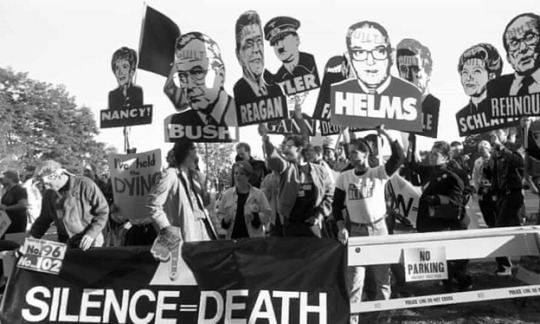
Many members of ACT UP were sick with the virus themselves, and they engaged in civil disobedience in protest for increased research on HIV/AIDS in the attempt to find a cure for the virus. Activists such as Kramer made good use of the media when they established AIDS organizations. These organization's central role was to increase media exposure on the risks that members of the LGBTQ were facing as well as encouraging them to come out in huge numbers to fight for their rights. Through such organization and media coverage, it forced the government and private drug companies to pursue research that led to the discovery of ARVs as a treatment for HIV/AIDS and saved the lives of not only the gay community but infected heterosexuals as well.
References
Butler, I. (n.d.). This remarkable history of the fight against AIDS is a guide to the battle yet to come. Slate Magazine. https://slate.com/culture/2016/12/david-frances-how-to-survive-a-plague-reviewed.html
Corry, J. (1985, June 27). Film: Documentary on homosexuals (Published 1985). The New York Times - Breaking News, US News, World News and Videos. https://www.nytimes.com/1985/06/27/movies/film-documentary-on-homosexuals.html
Heiko Motschenbacher, H. (2019, November 18). Language use before and after Stonewall: A corpus-based study of gay men’s pre-Stonewall narratives - Heiko Motschenbacher, 2020. SAGE Journals. https://journals.sagepub.com/doi/full/10.1177/1461445619887541
History. (2018, June 1). How the Stonewall Riots Sparked a Movement | History. YouTube. https://www.youtube.com/watch?v=Q9wdMJmuBlA
Holden, S. (2013, February 20). They wouldn’t take no for an answer in the battle against AIDS (Published 2012). The New York Times - Breaking News, US News, World News and Videos. https://www.nytimes.com/2012/09/21/movies/how-to-survive-a-plague-aids-documentary-by-david-france.html
John-Manuel, A. (2019, June 14). Film: "Before Stonewall" Explores LGBTQ pain and resilience. Psychology Today. https://www.psychologytoday.com/us/blog/stonewall-strong/201906/film-stonewall-explores-lgbtq-pain-and-resilience
Lecklider, A. S. (2021, June 10). The push for LGBTQ equality began long before Stonewall. The Washington Post. https://www.washingtonpost.com/outlook/2021/06/10/push-lgbtq-equality-began-long-before-stonewall/
Weiss, A. (2019, June 30). Creating the first visual history of queer life before Stonewall. The Atlantic. https://www.theatlantic.com/entertainment/archive/2019/06/before-stonewall-documentary-archives-history-invisible/592675/
Winik, M. (2016, November 28). David France’s eyewitness account of AIDS activism. Newsday. https://www.newsday.com/entertainment/books/how-to-survive-a-plague-review-david-france-s-exhaustive-history-of-aids-activism-1.12667430
7 notes
·
View notes
Text

David von Krafft - Princess Hedvig Sofia of Sweden (1681-1708)
4 notes
·
View notes
Photo
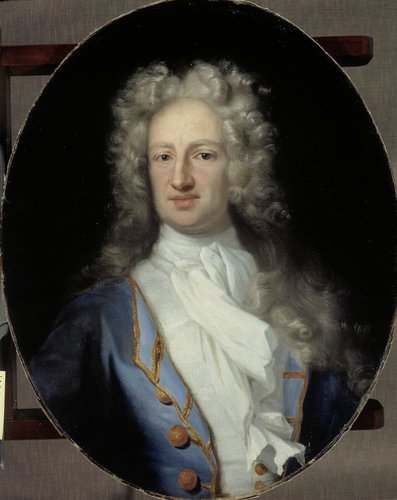
Sculptor Burchard Precht, David von Krafft, 18??, Finnish National Gallery
http://kokoelmat.fng.fi/app?si=S+83
5 notes
·
View notes
Photo

Charles XII (1682-1718), King of Sweden, Museum of the Netherlands
Portret van Karel XII, koning van Zweden. Ten halven lijve, staand, met de linkerhand in de zij. Kopie door een onbekende naar het origineel van David von Krafft.
6 notes
·
View notes
Photo
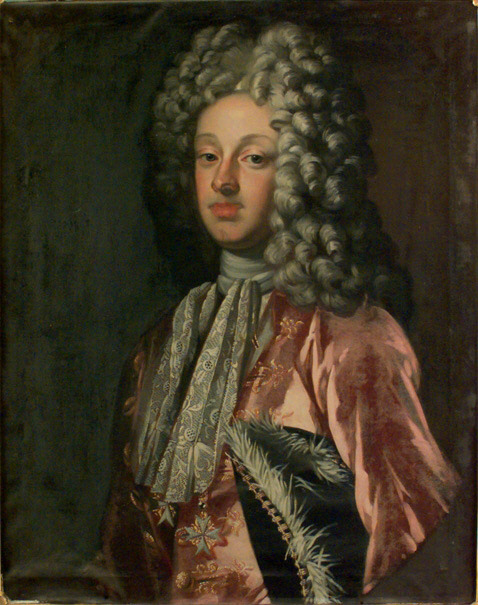
1706 David von Krafft - Johan Göran Fleming
(Skokloster Castle)
42 notes
·
View notes
Text

Hedvig Eleonora of Holstein-Gottorp, queen of Sweden. By David von Krafft.
#david von krafft#kingdom of sweden#queen hedwig eleonora#house of palatinate zweibrücken#wittelsbach zweibrücken
2 notes
·
View notes